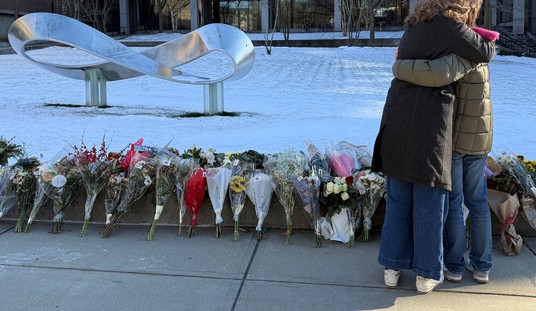In the remote cane fields of South Florida lies the City of Refuge, which provides a home for 120 registered sex offenders in a compound consisting of sixty concrete buildings. There’s a need for such communities, the leaders of Matthew 25 Ministries say, because registered sex offenders are not free to live wherever they choose. By law, they cannot live near children and those who are subject to a lifetime registration requirement are banned from federally subsidised public housing. As a result, many convicted sex offenders end up living on the streets, without the benefit of community support or accountability.
Jay Kirk visited the unusual community and interviewed many of its residents. He writes at GQ:
As everybody now knows, sex offenders have a rough time of it after they get out of prison. Because of the registry. Because the state says they can’t live within a thousand feet of a school or a playground or a bus stop. Because they can’t live anywhere children assemble, etc. So they end up living out of their cars, under highway overpasses, or in the woods, like fearful animals, like homeless lepers. You could say they’re lucky to be here, even if it is four miles from anything resembling a town, not much of a resemblance at that, and the “city” (really more of a village) being just a lonely former barracks built by U.S. Sugar for migrant workers in the ’60s. Sixty-one concrete bungalows on twenty-four acres, with 120 resident offenders at any given time, surrounded by hundreds of thousands of acres of sweet, sugary nothing. A couple of dozen older Jamaicans still live here, too, but the sex offenders arrived six and a half years ago when Pat Powers, an offender himself, came and claimed the place in the name of Jesus Christ. They live in this exile, of course, because there is nothing lower than their kind.
Considering how welcoming they are, however, I’m inclined to resist the urge to assume the worst—and anyway, I don’t particularly want to know the specifics of any of their crimes. Society has already exacted its debt, is my thinking.
But despite Kirk’s best efforts to shed a positive light on this community — painting its residents as mostly victims of an over-zealous criminal justice system — he quickly realizes it’s not all sunshine and roses in the land of convicted sex offenders. He talks to one man, Andy, who lives there with his wife and two small children. Andy tells Kirk that he doesn’t associate with the other residents much because “there’s a good number here who got convicted, went to prison, got out, recommitted, got convicted again, often for multiple victims” and he doesn’t want them around his children.
He also interviews Richard, who served time for molesting his twin step granddaughters:
He says he takes responsibility for what happened, he was the “grown-up,” but after eight years in prison, what really rips him is how offenders get stigmatized when there’s so much worse in the world. Seriously, he says, which was worse? Killing kids or just molesting them? Had he killed any children? No. And which was worse for a parent? To have their kids molested but at least alive and still be able to go to therapy afterward, or to have them be dead?…He thinks this bias comes from the skewed way “society” looks at things. It’s irrational. People are irrational. “Having your child molested becomes a personal thing.”
As if any parent of a victimized child ever gets to make that choice.
Kirk said the conversation with Richard left him “addled.” He admires the experiment that has given “an undeniably over-punished group a voice.” Still, he doesn’t know if stigmatizing sex offenders is “fair.”
“What does nag me, however, is the way they advocate for themselves as if the discrimination they suffer is really no different than that of an oppressed minority group,” Kirk writes. “I’ve heard Pat start in twice now about how he really gets the plight of the Jews in Nazi Germany because he says he’s seen the sheriff’s office show up in the middle of the night and enter people’s homes without much ceremony.”
Finally, overcome by what he calls an “unwholesome urge,” Kirk (who is researching this topic for GQ, right?) finally gives in and decides to check the sex offender registry to find out what these people have done:
But my skin grows colder with each click. A new wave of dread at each mug shot. It’s like getting a peek at a bundle of autopsy photos on a crime show, when a cop drops a folder to reveal a bit of unwelcome if titillating exposition. Traveling to meet a minor. Lewdly fondle. Lascivious molestation. To solicit or obtain. Commit or simulate. Force or entice.
Still, Kirk is offended at himself “for having looked.” He still wants to believe that these are basically good guys who are victims of the prison industrial complex.
But he grows even more uneasy when he finds out that the story he’s been told about the City of Refuge taking over a crime-ridden wasteland may have been exaggerated. Some of the residents who have lived there since before the sex offenders arrived say stories of the place being plagued by drugs and frequent shootings are not true. Instead, many residents moved out when they heard the ex-cons were coming. Kirk writes:
So for the offenders to find their own corner of heaven, to create their own community out of exile, another community had to be displaced. That’s what I’m hearing. This was the real offense. Those were the terms and conditions for the families who had already been compelled once to leave their homes to seek a better life in the cane.
Therein lies the dilemma. No one wants these convicted sex offenders living next door to them. Parents don’t want them prowling around near their kids’ schools or skulking around the public library looking at child porn on the internet. While we may accept that they’ve paid their legal debt to society, we are less convinced that they have been rehabilitated — according to the Department of Justice, 10.3% are arrested for another sex crime within ten years. And while Kirk wants us to think that the majority of the men (and the one or two women) who live at the City of Refuge are 20-year-olds who were caught in a backseat somewhere with their 15-year-old girlfriends, a search of the national sex offender registry (zip code 33476) reveals that the place is packed with violent offenders who have committed heinous crimes.
But if not in your neighborhood, and not in public housing, where? Between 10,000-20,000 sex offenders are released from prisons and return to the community annually. They have to go somewhere. Either they will live in our neighborhoods or they will live on the streets — or they will live in halfway communities like the City of Refuge. There are no really good (or easy) answers.











Join the conversation as a VIP Member